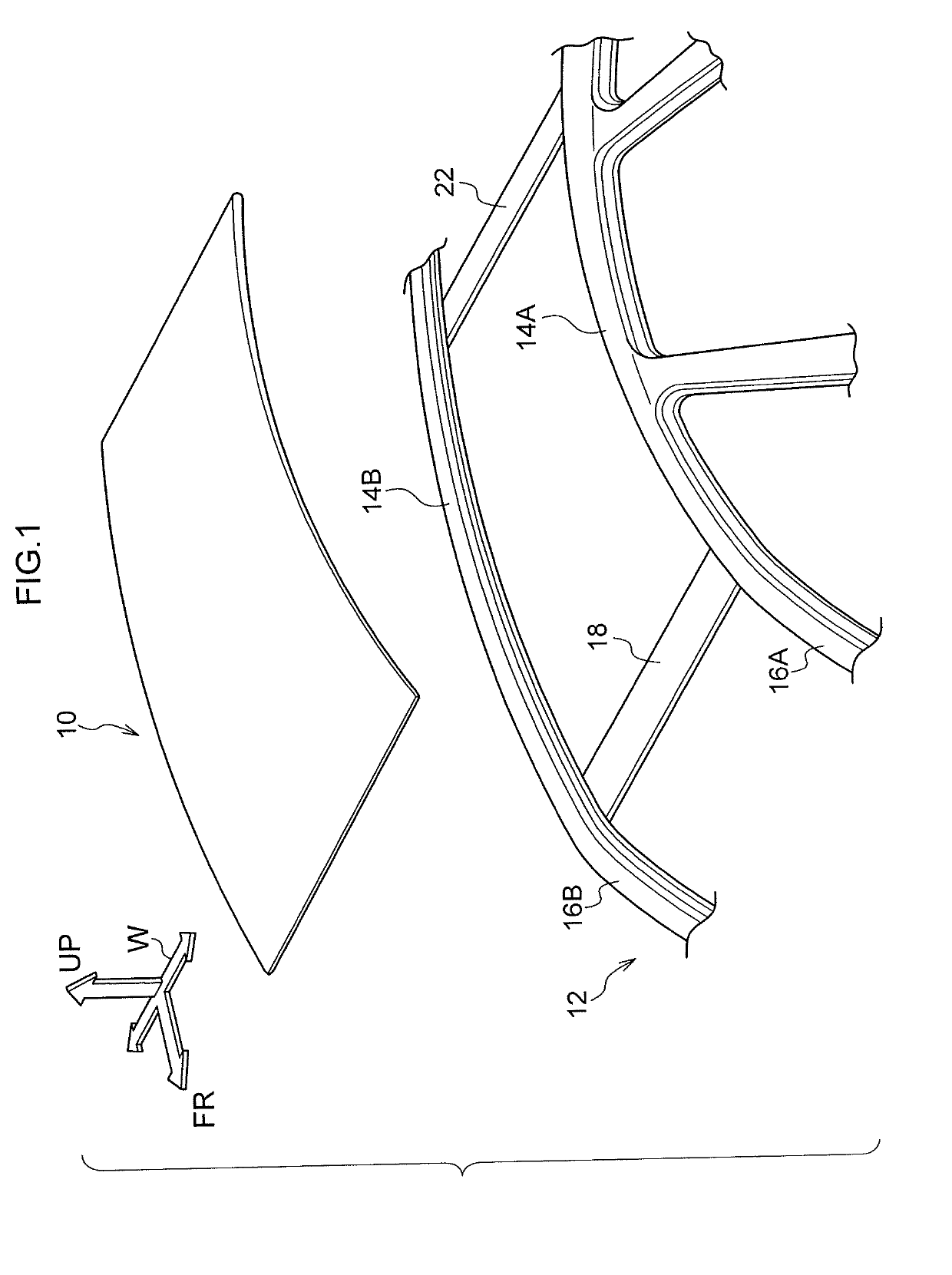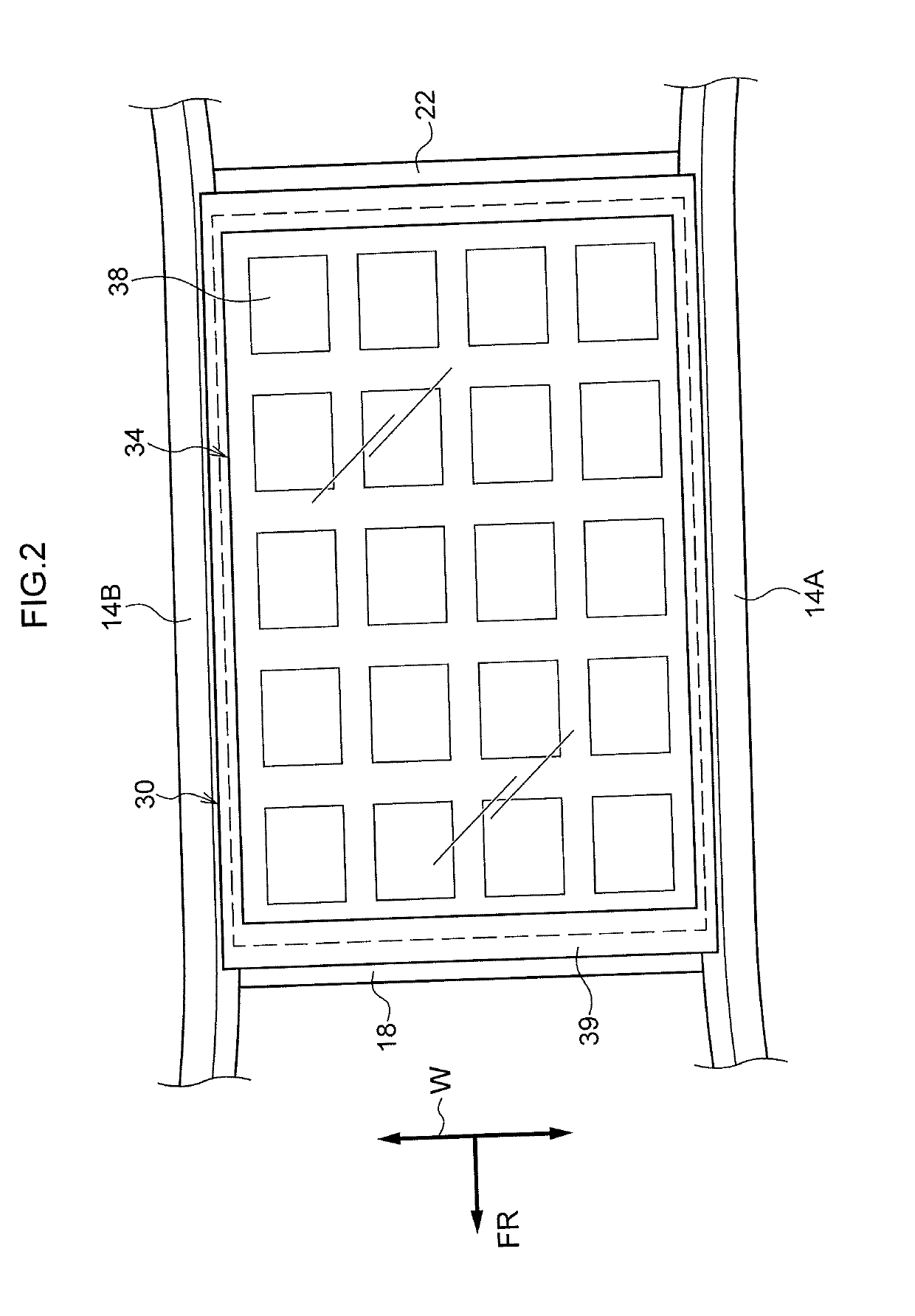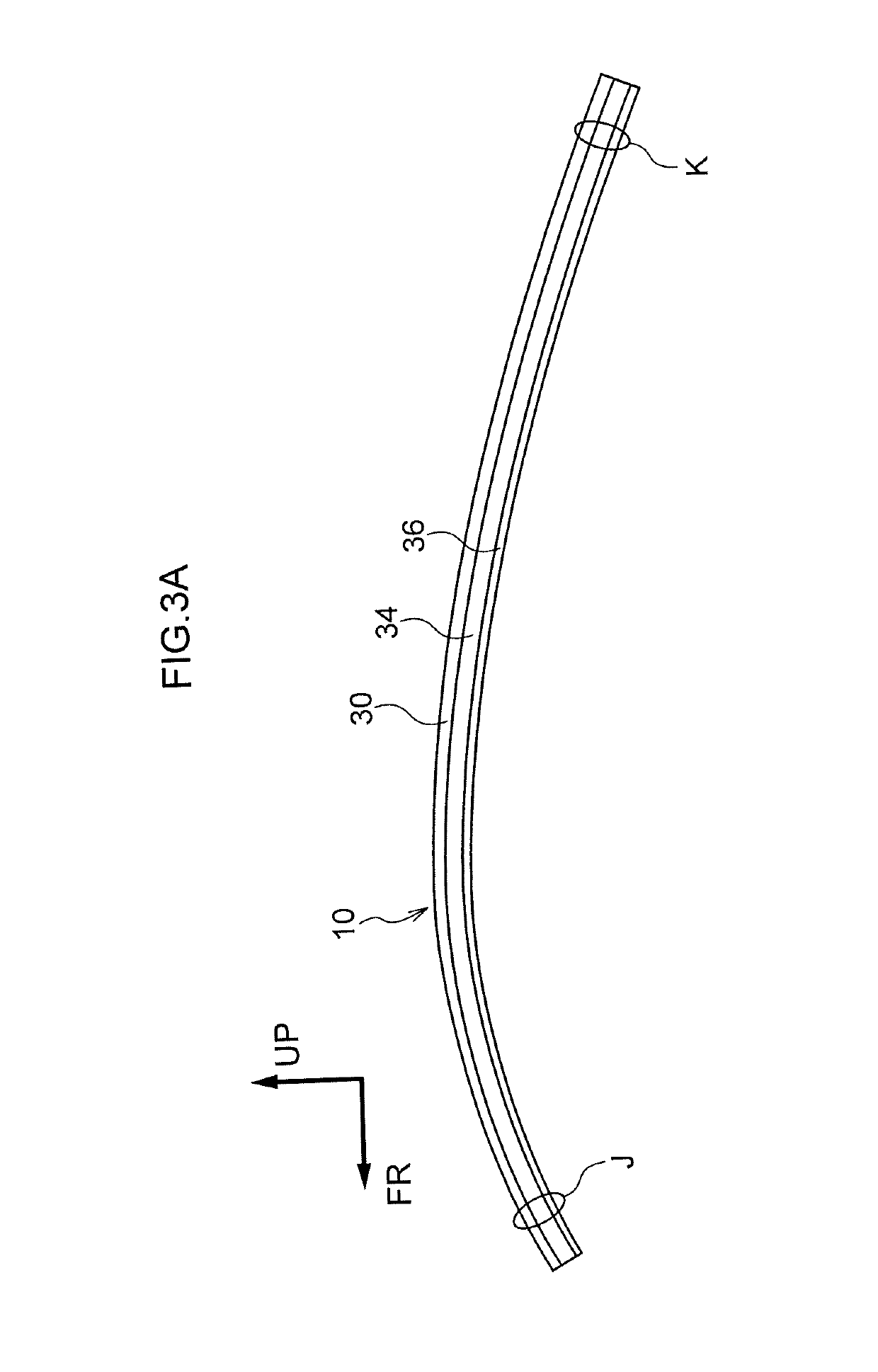Solar cell module
a solar cell module and solar cell technology, applied in the field can solve the problems of excessive bending rigidity of solar cell modules and considerable deflection of elements, and achieve the effects of plate thickness, and reducing the weight of solar cell modules
- Summary
- Abstract
- Description
- Claims
- Application Information
AI Technical Summary
Benefits of technology
Problems solved by technology
Method used
Image
Examples
first embodiment
[0038]A solar cell module according to a first exemplary embodiment of the present disclosure will now be described with reference to FIG. 1 through FIG. 4D. Note that the solar cell module according to the present exemplary embodiment is mounted as a vehicle roof on a vehicle frame component. Moreover, each drawing is a typical view, and structure that has little or no relation to the present exemplary embodiment has been omitted from the drawings. Furthermore, an arrow FR, an arrow W, and an arrow UP that are shown in the drawings respectively indicate a vehicle forward direction, a vehicle width direction, and a vehicle upward direction.
[0039](Structure)
[0040]As is shown in FIG. 1, a vehicle solar call module 10 according to the present exemplary embodiment is mounted as a roof on a vehicle body 12. A pair of roof side rails 14A and 14B are provided extending in the vehicle front-rear direction at both end portions in the vehicle width direction of the vehicle body 12 as componen...
second embodiment
[0062]A solar cell module according to a second exemplary embodiment of the present disclosure will now be described with reference to FIG. 5. Note that component elements that are the same as in the first exemplary embodiment are given the same reference symbols and a detailed description thereof is omitted. Furthermore, as the second exemplary embodiment differs from the first exemplary embodiment only in the configuration of the front surface layer 30 and the rear surface layer 36, only these portions are described below.
[0063]In a solar cell module 50, the plate thickness of the front surface layer 30 is formed proportionately thinner in portions where the curvature in the vehicle front-rear direction is larger. In contrast, the sealing layer 34 and the rear surface layer 36 are formed having uniform plate thicknesses in the vehicle front-rear direction.
[0064]In other words, an adjustment is made to the plate thickness of just the front surface layer 30 such that the plate thick...
third embodiment
[0066]A solar cell module according to a third exemplary embodiment of the present disclosure will now be described with reference to FIG. 6. Note that component elements that are the same as in the first exemplary embodiment are given the same reference symbols and a detailed description thereof is omitted. Furthermore, as the third exemplary embodiment differs from the first exemplary embodiment only in the configuration of the front surface layer 30 and the rear surface layer 36, only these portions are described below.
[0067](Structure)
[0068]In a solar cell module 60, the plate thickness of the rear surface layer 36 is formed proportionately thinner in portions where the curvature in the vehicle front-rear direction is larger. In contrast, the front surface layer 30 and the sealing layer 34 are formed having uniform plate thicknesses in the vehicle front-rear direction.
[0069]In other words, an adjustment is made via the plate thickness of just the rear surface layer 36 such that ...
PUM
| Property | Measurement | Unit |
|---|---|---|
| Thickness | aaaaa | aaaaa |
| Stiffness | aaaaa | aaaaa |
Abstract
Description
Claims
Application Information
 Login to View More
Login to View More - R&D
- Intellectual Property
- Life Sciences
- Materials
- Tech Scout
- Unparalleled Data Quality
- Higher Quality Content
- 60% Fewer Hallucinations
Browse by: Latest US Patents, China's latest patents, Technical Efficacy Thesaurus, Application Domain, Technology Topic, Popular Technical Reports.
© 2025 PatSnap. All rights reserved.Legal|Privacy policy|Modern Slavery Act Transparency Statement|Sitemap|About US| Contact US: help@patsnap.com



